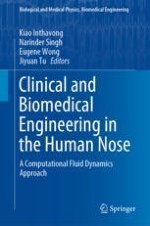This book explores computational fluid dynamics in the context of the human nose, allowing readers to gain a better understanding of its anatomy and physiology and integrates recent advances in clinical rhinology, otolaryngology and respiratory physiology research. It focuses on advanced research topics, such as virtual surgery, AI-assisted clinical applications and therapy, as well as the latest computational modeling techniques, controversies, challenges and future directions in simulation using CFD software. Presenting perspectives and insights from computational experts and clinical specialists (ENT) combined with technical details of the computational modeling techniques from engineers, this unique reference book will give direction to and inspire future research in this emerging field.
